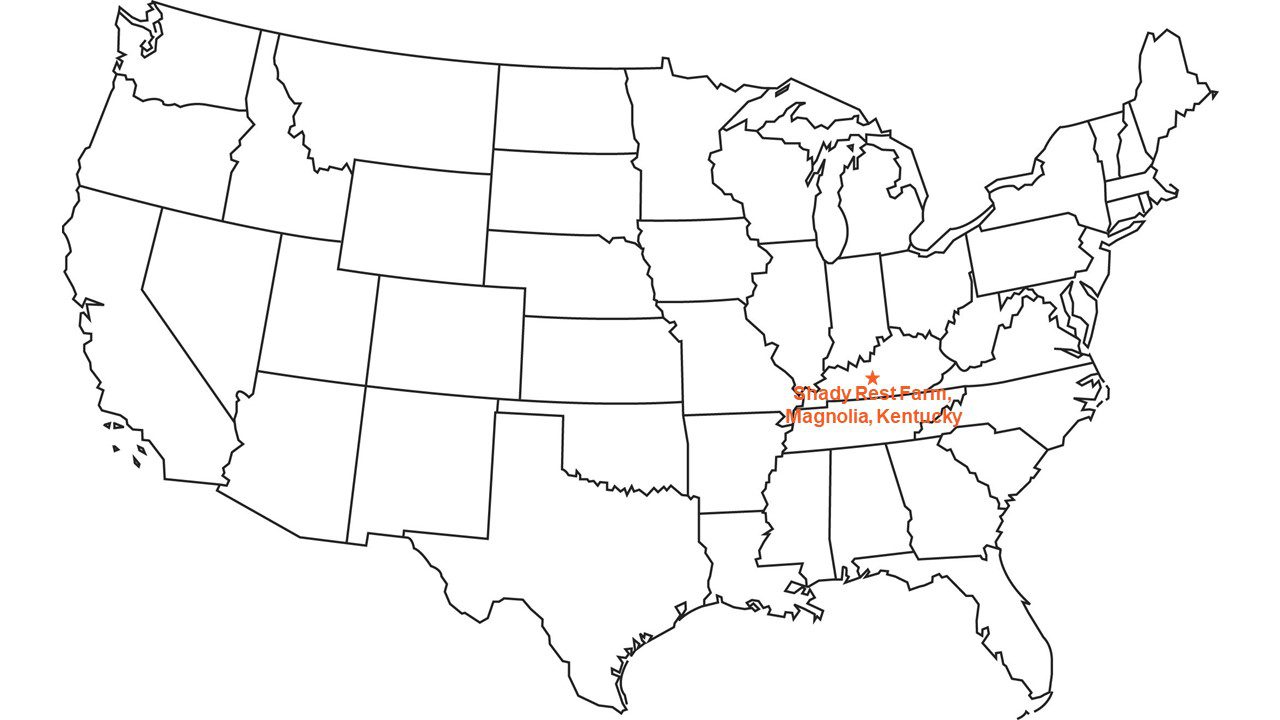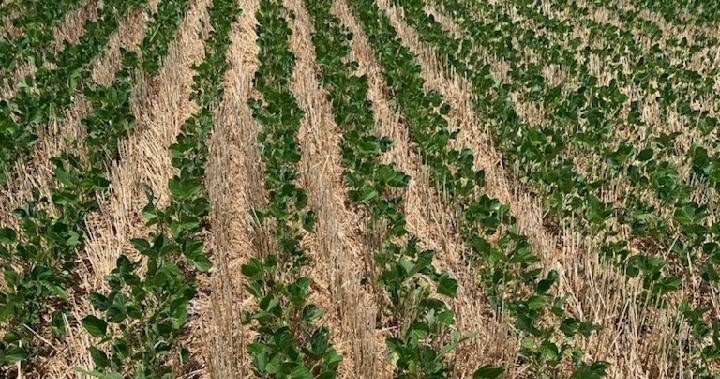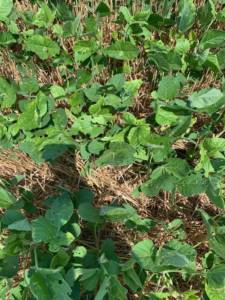 Though our double-crop soybeans got off to a good start in late June, the month of July was fairly dry. The crops are getting thirsty. Right now, we are praying for rain and defending against diseases and bugs.
Though our double-crop soybeans got off to a good start in late June, the month of July was fairly dry. The crops are getting thirsty. Right now, we are praying for rain and defending against diseases and bugs.
With our soil, we are always about one week away from a drought. That’s part of the reason we use practices to improve our soil health. No-till and cover crops help our soil hold moisture better and longer when it is hot and dry, like it is now. That additional moisture allows our soybeans and corn yields to grow better when it’s a long time between rains, which can make a big difference in our final yields.
By early August, the soybeans reached 20 to 25 cm, or 8 to 10 inches, tall, growing above the wheat straw left in the field after wheat harvest. We applied herbicide to control weeds. But then in late July we had to fight fall armyworms. These hungry worms really liked the young, tender soybean leaves so much that we had to make an emergency insecticide application. At this size, the soybeans were very susceptible to damage, and they are growing slowly because they need water. One picture shows the holes that fall armyworms ate in the leaves of our soybeans. The other picture shows one of the worms we controlled with insecticide.
The soybeans are just starting to bloom, and they will continue to grow taller, flower and start setting pods throughout August. We still have a long way to go to determine how this soybean crop will yield.
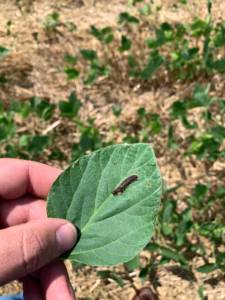 Our corn also needs water, as it is currently filling kernels. Southern rust, a devastating disease that turns green corn plants orange, was confirmed in our area in late July. The corn that was planted or replanted later in the season because of heavy spring rains was especially susceptible to rust. Because of that, we applied a fungicide to protect our corn. In some fields, we hired an aerial applicator to fly that fungicide on to the very tall corn. But because of full schedules, we used a ground rig to apply fungicide to defend against Southern rust in other fields.
Our corn also needs water, as it is currently filling kernels. Southern rust, a devastating disease that turns green corn plants orange, was confirmed in our area in late July. The corn that was planted or replanted later in the season because of heavy spring rains was especially susceptible to rust. Because of that, we applied a fungicide to protect our corn. In some fields, we hired an aerial applicator to fly that fungicide on to the very tall corn. But because of full schedules, we used a ground rig to apply fungicide to defend against Southern rust in other fields.
This time of year, the heat and humidity can be hard on our pigs. We keep them comfortable in air-conditioned buildings, which is much better for them than the elements. Our pig buildings pull air across pipes filled with cold water to keep the air at the right temperature for our sows and piglets. Thanks to practices like this, our pigs have it made, despite the heat.
Since we’ve done as much as we can to defend our soybeans and corn from pests, we are now turning our attention to getting ready for harvest and winter wheat planting. We have nearly finished hauling wheat to flour mills. We are cleaning out and selling the remaining soybeans and corn in our storage bins so they can be filled this fall.
I am also using this time to catch up on paperwork and record keeping for the farm, and to attend industry meetings. For example, I attended an American Soybean Association meeting in Vancouver, Washington, on the Columbia River that carries many U.S. soybeans through our Pacific Northwest region for export.
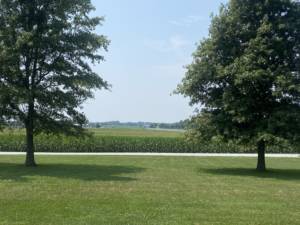 Our goal is always to be harvesting corn by early September — specifically by our Labor Day holiday, the first Monday of that month. Right now, we look to be on track for that. We continue to pray for rain and defend our crops from pests.
Our goal is always to be harvesting corn by early September — specifically by our Labor Day holiday, the first Monday of that month. Right now, we look to be on track for that. We continue to pray for rain and defend our crops from pests.
This field update is funded by the soybean checkoff. To share or republish part or all of this Ground Work 2021 article, please link to the original article and credit www.USSOY.org.
